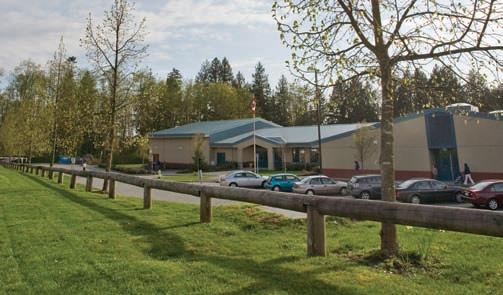SPOA_Spr_2010:SPOA_Template.qxd
5/5/2010
5:07 PM
Page 28
Making the case for facility modernization, renovation and repairs at school districts BY MICHAEL KWOK, P.ENG. MBA, VP PROFESSIONAL SERVICES, GOVERNMENT, EDUCATION & INTERNATIONAL OPERATIONS, VFA CANADA
Like homeowners with limited budgets and a long list of repairs, school districts often have to make tough choices when it comes to deciding what building systems to modernize, renovate or repair— or when to build new. Unlike many businesses that may relocate as their needs change, most school districts have a long-term relationship with their physical site and buildings, which form an important part of their identity. As stewards of the physical plant, the institutions’ facility managers are responsible for ensuring that all facilities—including classrooms, libraries, gymnasiums, cafeterias, and student centres—are effectively meeting the needs of their users. Every day, facility managers at school districts must consider theoretical situations, including: • How do the costs and benefits of renovating an aging residence hall compare with those of replacing the building?
ST RESINRUCTURAL INJECT
ION
•
Is building a new athletic centre that will attract more students a top priority, or is expanding facilities for research? • If a planned project is deferred, what are the implications for overall costs and available budgets? Whether they decide to purchase energy-efficient light bulbs or make structural improvements to an aging school building, facility managers who are tasked with modernizing and upgrading school buildings certainly have a lot to consider. By regularly monitoring the condition of school facilities, which consume 20 to 30 per cent of an institution’s annual capital outlay, districts can quickly determine what improvements—whether they be modernization, renovation or repairs—are needed most when funds become available. Most institutions begin by drawing up a master plan, which includes
URETEK
®
! We lift, align, under-pin and stabilize settled, voided or shifting concrete slabs. ! We can densify weak soils to increase load-bearing capacity using our unique deep-injection technology. ! We can repair municipal infra-structure as concrete or asphalt pavements and storm/waste water systems. MINIMAL DISRUPTION! COST EFFECTIVE! PERMANENT!
1-866-8-URETEK 1-866-887-3835 WWW.URETEK.CA 28
Ops Talk • Spring 2010
information about functional needs over time and how the organization’s facilities portfolio will be adapted to meet those needs. Another important foundation for planning is accurate information about the current condition of facilities and their major systems, including the identification of repair, renovation or renewal needs and their associated costs. Detailed facility condition assessments, usually conducted by a professional assessment or engineering firm, provide schools with detailed documentation of the existing conditions of both facility structures and all major building systems. They include detailed cost estimates for addressing all identified deficiencies and renewal needs. Such assessments are most appropriate when facility condition data is non-existent, outdated or inconsistent, when there are specific system or structural issues that require detailed evaluation, or when the organization requires detailed cost data for the purposes of long-term capital budgeting. They may be combined with specialized evaluations such as addressing energy efficiency issues, compliance requirements, or programmatic adequacy. These specialized assessments are valuable—and may be required—when major capital improvements that address a specific type of need are being considered. Such assessments provide the greatest level of accuracy and detail at a concomitant level of cost. In cases in which a school district has reliable data about the overall condition of its facilities, it may choose to undertake Lifecycle Condition Assessments that focus exclusively on major building systems and document age, condition,


















